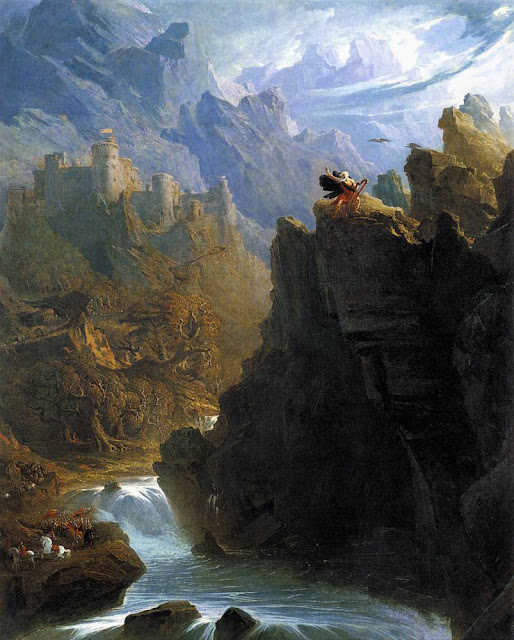It is shot in Blair Witch/Cloverfield camera POV style, but fortunately the shakey-cam is kept to a tolerable minimum. The acting is rather good (but that might be because it is all in Norwegian and subtitled). The scenic landscape is beautiful. The pacing of the film is quite well done.
The trolls design in the film seems to be primarily based on the artwork of Theodor Kittelsen. There is some pretty cool internal troll mythology in the movie. Like the idea that trolls are born with one head, but as they age, they grow more "heads". These other heads are not really heads at all, but are designed to make the troll more fearsome and intimidating to other trolls (and attractive to the troll ladies!). Only the original head can actually see.
 |
| Theodor Kittelsen: Very old Troll! |
Trolls are stupid... hardly more than bestial intelligence ("I saw a troll try to eat its own tail once"), which allows them to be played comically if the DM so chooses. They are divided into two main types (mountain trolls and forest trolls), and have turf wars which involved flinging very large boulders at one another. The tend to lair in groups of a half dozen or so, and vary wildly in size, from say 30 feet to over 200 feet.
Trolls can also smell human blood. Specifically in the movie, the "blood of a Christian". But in your campaign, it can be the blood of any nationality. I like that idea... that different nationalities smell different. As in "Fee Fie Fo Fum! I smell the blood of an Englishman!" Maybe someone from the PC's home country crossed the troll before, and the troll has a particular hatred for his countrymen. The human smell can be covered by "troll stench", a viscous rub of "everything you can squeeze out of a troll".
One of the great ideas in the movie is that trolls do not cross the landscape without leaving evidence of their passing behind. From this trail of destruction left in their wake, you can generate a pretty good guess as to their size and number. Often their passing is mistaken for tornadoes that came in the night. Attacks on livestock or wildlife by smaller trolls can be mistaken for bear or other mundane animal attacks.
Since trolls are turned to stone in sunlight, they can only travel by night, and must find shelter from the sun.
They can never be more than 12 hour's travel from such shelter. This can lead to making some fairly good guesses as to where a troll's lair might be in a given region.
I have to say that I'm inspired to design a troll adventure after seeing that movie. Particularly after seeing the humorous scene of the hunter in a home made suit of armor trying to draw a blood sample from a troll under a bridge. With three billy goats as bait no less. Now THAT was funny.
For an entertaining movie, I give Troll Hunter three out of five stars. For inspiration for gaming material, I give it a solid five!












